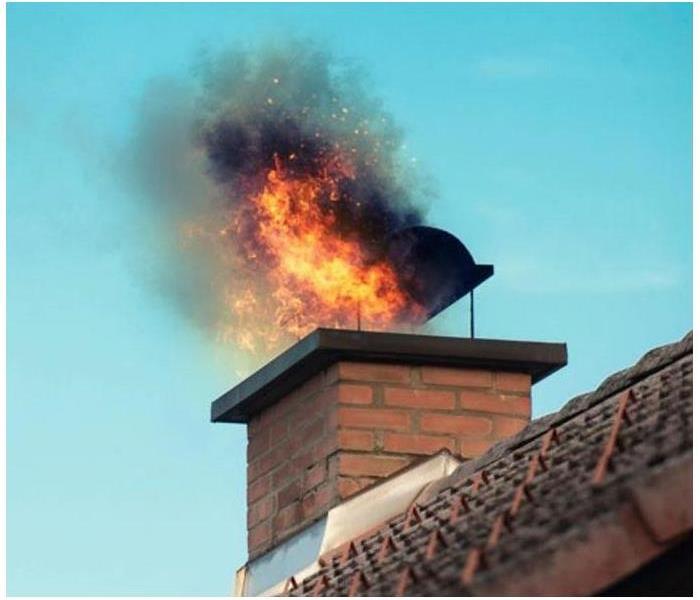Chimney Fire Prevention Tips
9/7/2021 (Permalink)
 Annual chimney inspection by a CSIA-certified chimney professional is a great step to take in identifying & repairing potential chimney fire hazards.
Annual chimney inspection by a CSIA-certified chimney professional is a great step to take in identifying & repairing potential chimney fire hazards.
It may be hard to believe, but with the Labor Day behind us and the unofficial end to Summer, heating season is not far off. Now is a great time to begin preparing for the colder months and making sure your home or property are safe and ready for heating season. One of the most common causes of fires in a home comes from the chimney. Thousands of chimney fires take place each year. The main reason a chimney fire occurs is due to flames in the lower section of the chimney migrating to the upper part of the chimney, causing the masonry or metal chimney walls to warp, melt or crack. Here are some examples of how you can help to prevent a chimney fire from occurring:
- Minimizing creosote build-up within the chimney. Only burn seasoned hardwood that has been dried for six months.
- Make sure your flue liner is insulated. This will help to prevent flue temperatures from getting too cool which could ultimately encourage fire by-products to condense and form creosote.
- Schedule an annual chimney inspection. Ideally, seek out a Chimney Safety Institute of America-certified chimney professional to inspect your chimney, fireplace or woodstove to inspect and locate any potential damage in these areas that could lead to chimney fires.
- Install a chimney cap. A cap on the crown of the outside opening of the chimney can help to prevent leaves, debris and even critters out of the chimney which can fuel a chimney fire when coming in contact with loose embers from a fire. A cap also helps to keep out rain which, over time, can corrode the chimney.
For more facts about chimney fires, and how you can locate an CSIA-certified chimney inspection professional, check out https://www.csia.org/.





 24/7 Emergency Service
24/7 Emergency Service